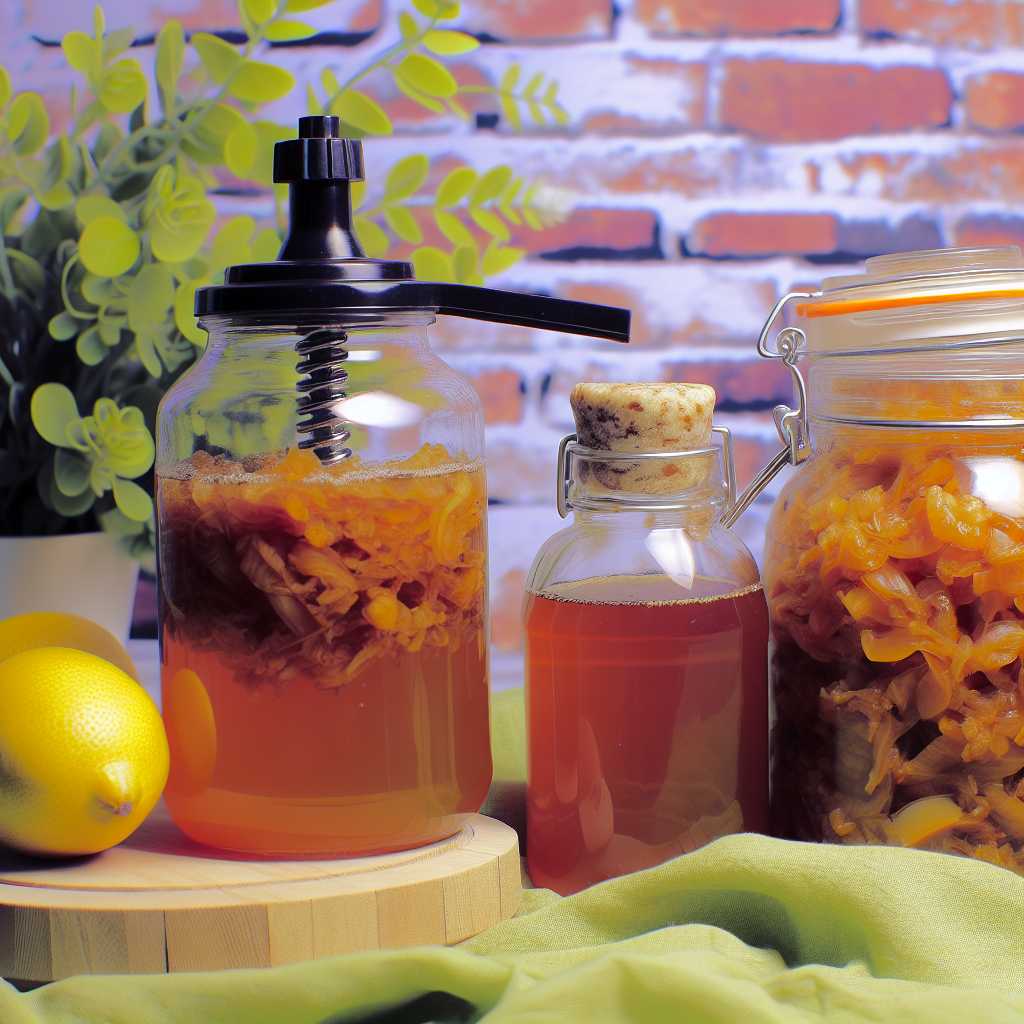DIY Kombucha: How to Make it Without a Scoby

DIY Kombucha: How to Make it Without a Scoby
Kombucha has been growing in popularity over the years as more people seek out healthier beverage options. This fermented tea is not only delicious but also offers a range of potential health benefits such as improved digestion, increased energy, and better gut health. While it’s easy to find kombucha at most grocery stores, making your own at home can be a fun and rewarding experience. In this article, we’ll walk you through the process of making DIY kombucha without a scoby, so you can enjoy this fizzy, probiotic-rich drink from the comfort of your own kitchen.
What is Kombucha?
Kombucha is a fermented tea beverage that has been consumed for centuries, particularly in China and other parts of the world. It is made by fermenting sweetened tea with a symbiotic culture of bacteria and yeast (SCOBY), which results in a slightly carbonated, tangy drink. The fermentation process allows for the growth of healthy bacteria and yeast, which can have a beneficial impact on your gut and overall health.
Why Make Kombucha Without a Scoby?
Traditionally, kombucha is made by fermenting sweetened tea with a scoby. However, if you don’t have access to a scoby, or you simply want to try a different method of making kombucha, you can still create a delicious and healthy beverage using just a few simple ingredients.
How to Make Kombucha Without a Scoby
Making kombucha without a scoby may seem daunting at first, but it’s actually quite simple once you understand the basic steps. Here’s a step-by-step guide to making your own DIY kombucha without a scoby:
Ingredients:
– 1 gallon of water
– 8 bags of black tea
– 1 cup of sugar
– 2 cups of unflavored, store-bought kombucha
Instructions:
1. Boil the water: Start by boiling the gallon of water in a large pot. Once the water comes to a boil, remove it from the heat and add the tea bags.
2. Steep the tea: Allow the tea bags to steep in the hot water for about 10-15 minutes. This will allow the tea to cool down to room temperature while also infusing the water with the flavor of the tea.
3. Add the sugar: Once the tea has cooled down to room temperature, remove the tea bags and stir in the sugar until it dissolves completely.
4. Add the store-bought kombucha: Pour the 2 cups of unflavored kombucha into the sweetened tea mixture and stir well. The store-bought kombucha will kickstart the fermentation process by introducing the necessary bacteria and yeast into the mixture.
5. Transfer to a large, clean jar: Pour the tea and kombucha mixture into a large, clean glass jar. Cover the jar with a clean kitchen towel or cheesecloth and secure it tightly with a rubber band to prevent any contaminants from entering the jar.
6. Let it ferment: Place the jar in a warm, dark place, such as a kitchen cabinet or pantry, and let it ferment for 7-10 days. Check on the kombucha periodically to ensure that everything is going smoothly and that no mold is forming on the surface.
7. Taste test: After 7-10 days, use a straw to taste the kombucha. It should be slightly tangy and fizzy, with a hint of sweetness. If it tastes to your liking, it’s ready to be bottled and enjoyed.
8. Bottle the kombucha: Using a funnel, pour the fermented kombucha into glass bottles, leaving about an inch of space at the top of each bottle. This will allow for carbonation to build up. Secure the bottle caps tightly and let the bottled kombucha sit at room temperature for an additional 2-3 days to further carbonate.
9. Refrigerate and enjoy: Once the bottled kombucha has reached your desired level of carbonation, transfer the bottles to the refrigerator to stop the fermentation process. Your homemade kombucha is now ready to be enjoyed!
Tips for Making DIY Kombucha Without a Scoby
Making kombucha without a scoby is a relatively straightforward process, but there are a few things to keep in mind to ensure that your homemade kombucha turns out delicious and safe to consume:
– Use a clean jar and utensils: It’s important to ensure that all of the equipment you use, including the jar, funnel, and stirring spoon, are clean and free of any contaminants. This will help prevent the growth of unwanted bacteria and mold in your kombucha.
– Monitor the fermentation process: Throughout the 7-10 day fermentation period, check on your kombucha regularly to ensure that everything is progressing smoothly. Look for signs of mold or any unusual odors, which could indicate that something has gone wrong during the fermentation process.
– Experiment with flavors: Once you’ve mastered the basic process of making DIY kombucha without a scoby, feel free to experiment with different flavors and ingredients to create your own unique combinations. Add fresh fruit, herbs, or spices to the bottled kombucha before refrigerating to infuse it with new and exciting flavors.
Incorporating Kombucha Into Your Health Routine
Homemade kombucha is a versatile beverage that can be enjoyed on its own or used as a base for creative mocktails and cocktails. It can also be a great addition to your health routine, thanks to its potential probiotic and antioxidant content. Just be sure to enjoy it in moderation, as it does contain some sugar and caffeine from the tea.
Conclusion
Making DIY kombucha without a scoby is a fun and rewarding process that allows you to enjoy the many benefits of this fermented beverage from the comfort of your home. With just a few simple ingredients and some patience, you can create a delicious, fizzy drink that can contribute to your overall health and wellness. By following the steps outlined in this article and keeping an eye on your fermentation process, you’ll be well on your way to enjoying homemade kombucha that’s just as good as (if not better than) store-bought varieties. So, grab your tea bags and sugar, and start brewing your own batch of kombucha today!
[elementor-template id=”430″]
[elementor-template id=”433″]




0 Comments